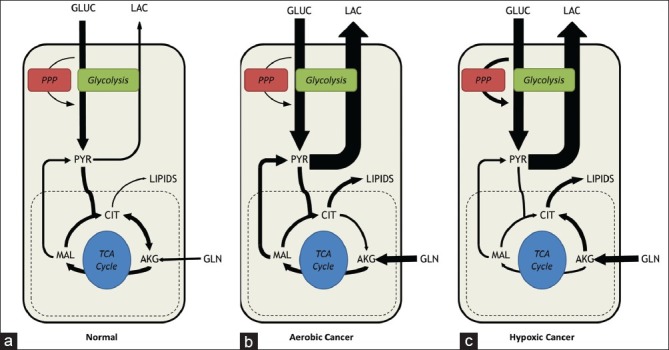Figure 2.

Metabolic phenotypes of normal versus cancer cells. (a) In normal cells under aerobic conditions, the majority of glucose consumed is fully oxidized in the tricarboxylic acid cycle to generate CO2 and to supply adenosine triphosphate (ATP). Lactate secretion and amino acid catabolism are minimal. (b) In cancerous cells, metabolism is rewired depending on oncogenic activation and environmental factors. Cancer cells increase their glycolytic flux by as much as 10-fold relative to normal cells. However, cancer cells grown in abundant oxygen and nutrients will typically maintain active mitochondrial respiration, fueled largely by elevated glutamine consumption. (c) In vivo tumors are subjected to varying oxygen tensions. In hypoxic environments, tumor cells adapt their energetic metabolism to generate ATP exclusively from glycolysis. However, mitochondria still provide key biosynthetic intermediates such as citrate for lipid synthesis. Glutamine metabolism may be redirected into reductive carboxylation to supply anaplerotic carbon directly to the citrate pool. One key point is that extracellular nutrient uptake and product secretion rates may not appear substantially different between panels (b and c), but isotope tracers and metabolic flux analysis enable detection of flux rerouting through intracellular metabolic pathways even in cases where extracellular rates are unchanged
